people and community
sustainable aquaculture in Indonesia protects mangroves, way of life
2 min read | february 16, 2024
An endangered proboscis monkey in the mangrove forest. The proboscis monkey is native to the island of Borneo and depends on the mangrove habitat for its survival. Photo courtesy of Pact.
Indonesia, home to approximately a quarter of the world’s mangrove forests, is facing a major challenge: several stretches of these forests have been converted to shrimp ponds to support community livelihoods.
Shrimp farming is a billion-dollar industry in Indonesia. It is an example of aquaculture, a term for raising fish and other aquatic life for human consumption. The practice is not without controversy. Attempts to restore mangroves eroded by shrimp farming have been underway for years.
Now, a $2 million, three-year grant from Chevron is funding a pilot program to restore 50 hectares of mangroves in the country. The aim is to demonstrate that sustainable shrimp aquaculture can benefit communities and can help preserve and restore mangrove ecosystems.
what is sustainable aquaculture?
Sustainable aquaculture can be achieved when social, economic and environmental needs are aligned. An Indonesian key partner of The Nature Conservancy called Yayasan Konservasi Alam Nusantara (YKAN), an international nonprofit organization called Pact, and Chevron are collaborating to strike that balance.
The program is MESTI, which is an acronym for an Indonesian phrase meaning “mangroves are friends of sustainable ponds.” Its goal is to protect the livelihood of Indonesian farmers in three separate villages in the district of Berau, East Kalimantan, Indonesia, while helping restore the wetlands there.
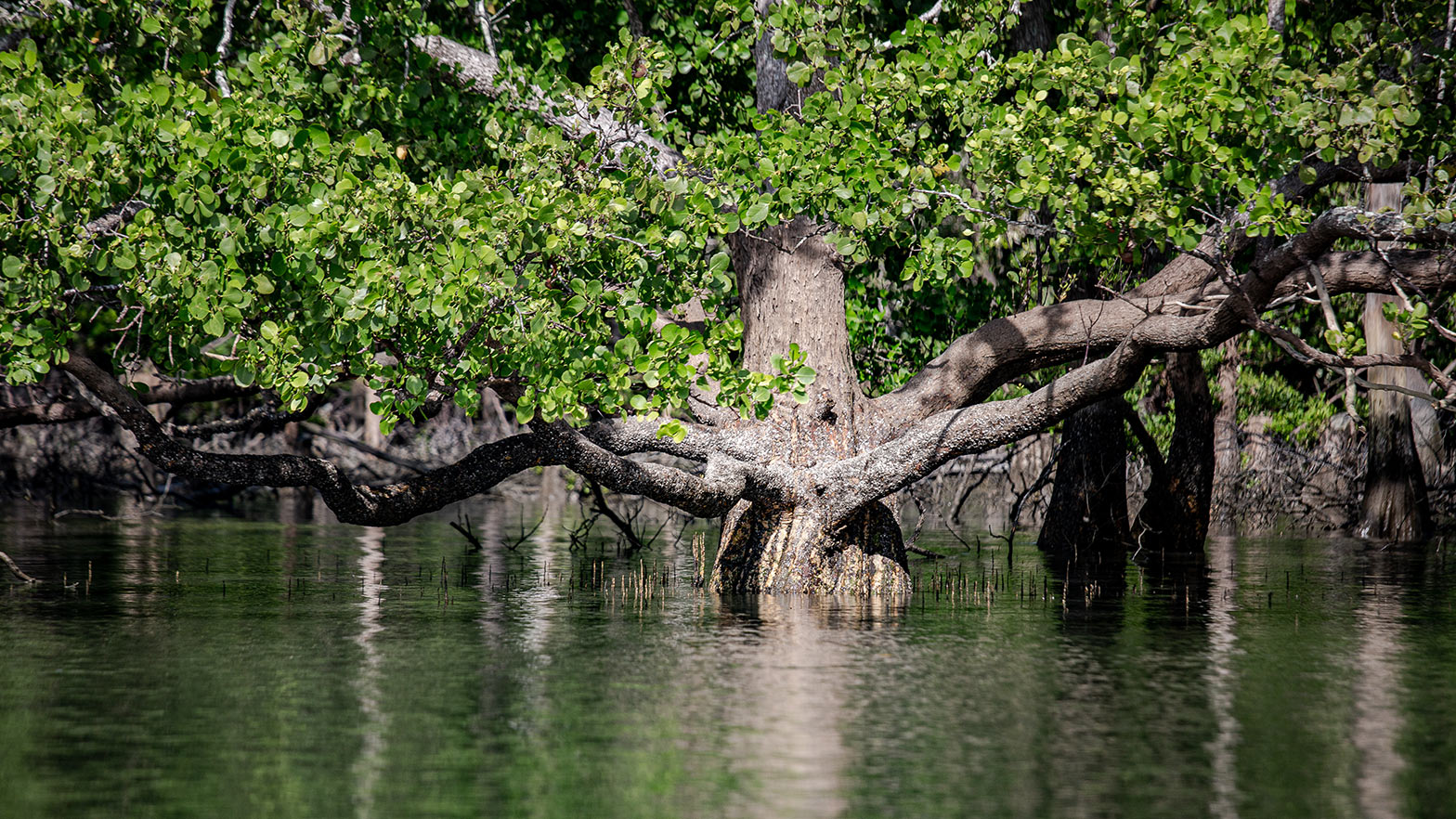
Mangroves and shrimp farming can coexist. Photo courtesy of Pact.
why it matters
According to a U.S. Forest Service study published in Nature Geoscience, mangroves are a necessary tool in the reduction of greenhouse gases because they store carbon dioxide—as much as two to four times that stored by tropical rainforests. They also serve as a critical buffer between offshore storms and populated areas. In Kalimantan, Indonesia, they are home to myriad of species, including the proboscis monkey, found nowhere else on Earth.
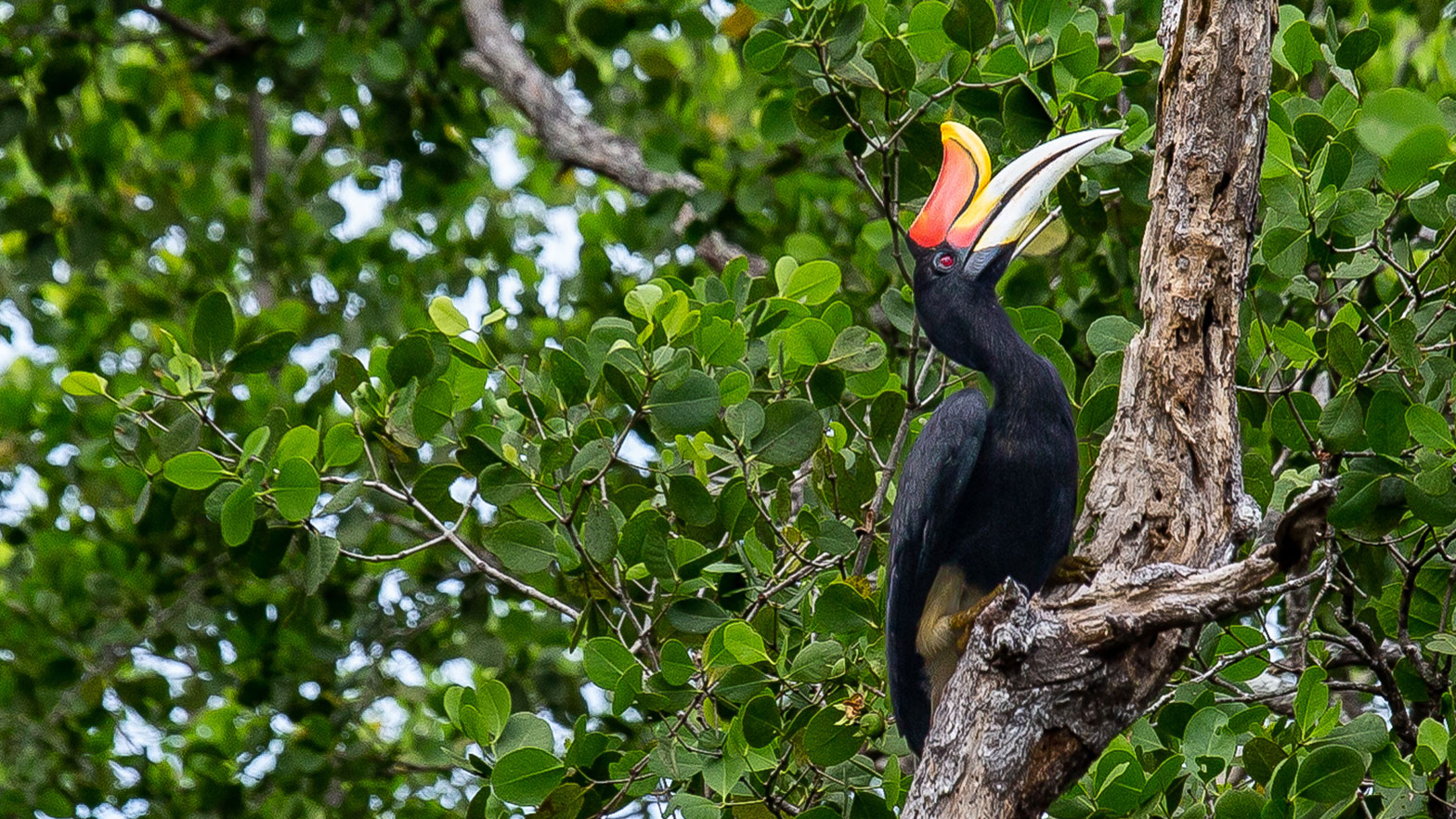
A rhinoceros hornbill is one of the many species that call the mangrove forest home. Photo courtesy of Pact.
wahyu budiarto
country manager
chevron Indonesia
the challenges
The three villages are in an isolated area, and at least one is only accessible by boat. The villages have limited access to electricity, which means there is no cold storage to preserve the shrimp haul for later packaging and shipping. This greatly limits the market for their product.
When managed traditionally, the ponds here produce less shrimp than others around the world because removing mangroves lowers water quality. This leads farmers to clear even more mangrove trees to make more ponds to maintain production.
how it’s going
Now, with the help of Pact and YKAN, mangroves symbolize a new way of doing business in Berau—one that seeks to decrease shrimp pond size, increase shrimp yields and allow mangrove forests to recover. YKAN developed the model and expects it to restore up to 80% of the mangrove ecosystem in existing ponds.
Pact works with the local community to support economic development through training, education and financial contributions. It’s also focused on renewable energy and cold storage solutions to provide shrimp farmers more flexibility for their product. Chevron’s recent grant is helping sustain their work’s momentum.
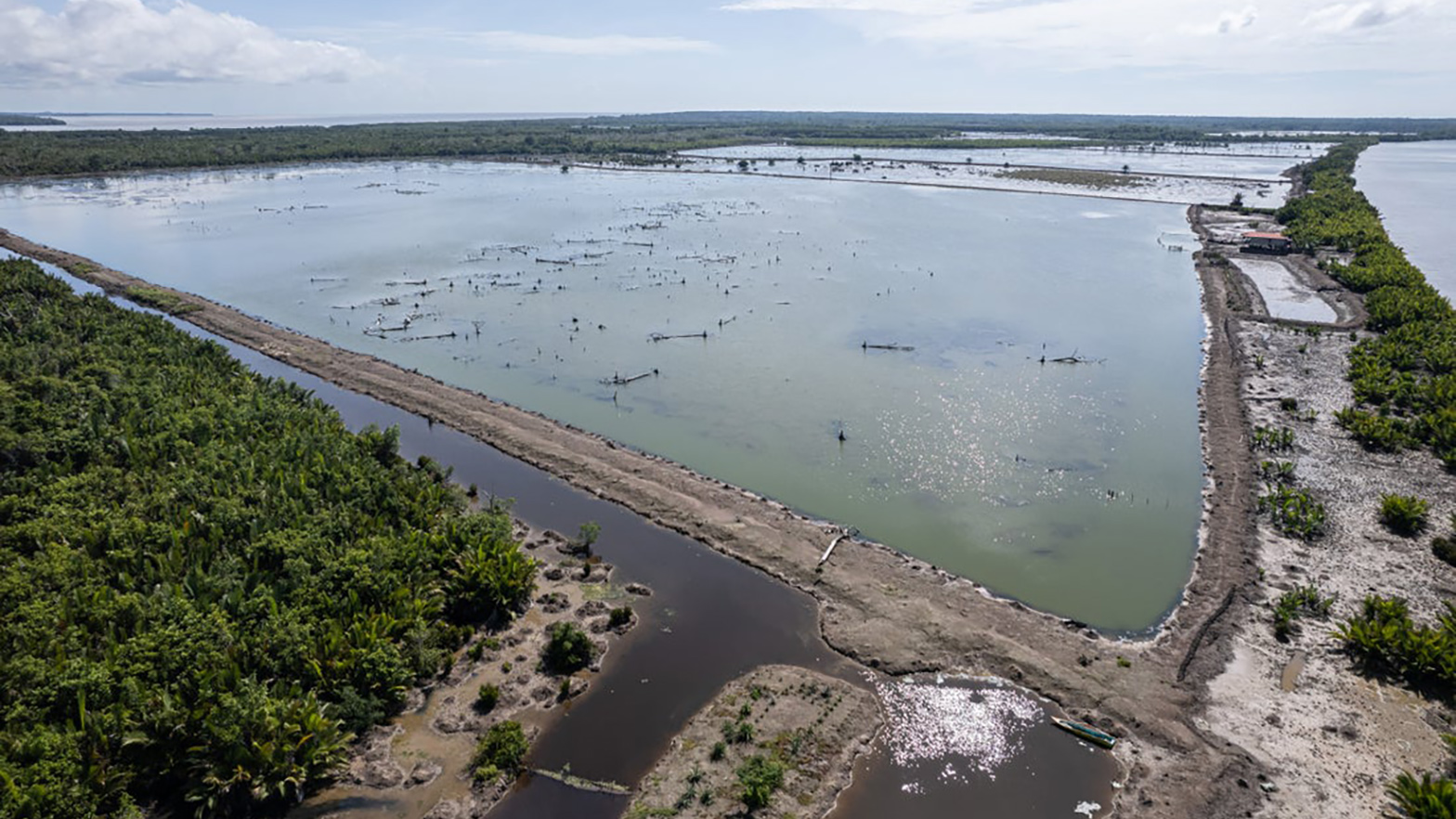
An area where mangroves have been cleared to form a shrimp pond. Photo courtesy of Pact.
Muhammad Ilman, the director of YKAN’s Ocean Programs, says their efforts to advance sustainable aquaculture are already paying off and mangroves are starting to rebound.
“Shrimp farmers have been largely ignored by governments and nongovernmental organizations (NGOs) in the past because they are seen as an enemy of mangrove restoration. But they can also be a big ally,” said Ilman.
topics covered
related content
-
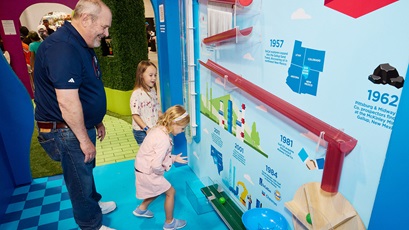
 supporting STEM education in new mexico
supporting STEM education in new mexicopeople and communitynovember 18, 2025
-
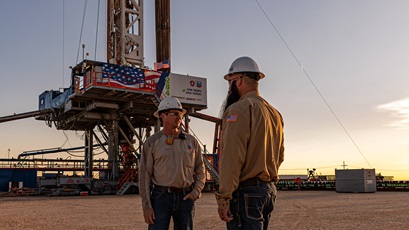
 frontline innovations drive business solutions
frontline innovations drive business solutionspeople and communitynovember 12, 2025
-

 the people who power the US energy advantage
the people who power the US energy advantageour operationsnovember 06, 2025
-
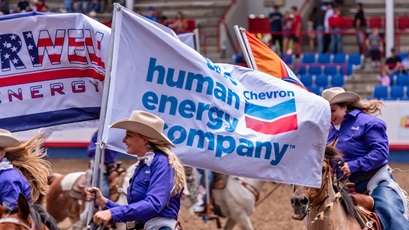
 greeley stampede is riding high, with chevron’s support
greeley stampede is riding high, with chevron’s supportpeople and communityaugust 18, 2025
chevron email updates
Subscribe to our newsletter to receive news and updates.



